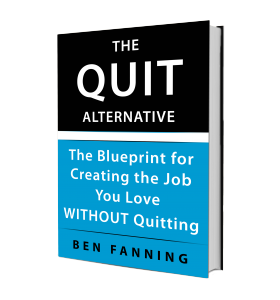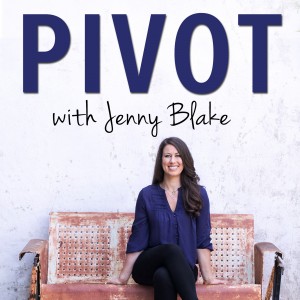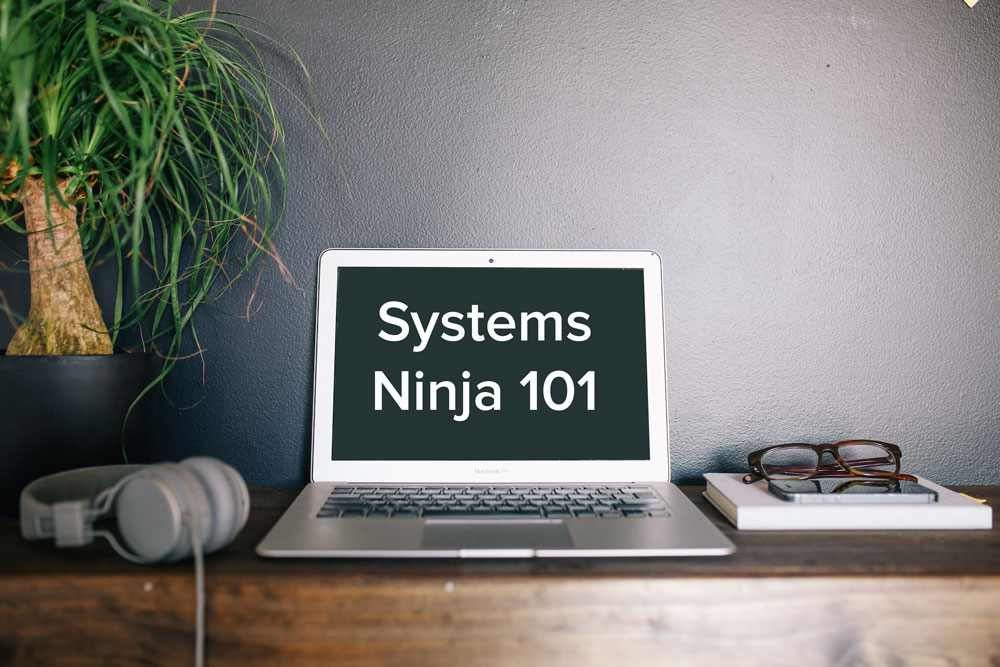Written by Jenny Blake. This post is brought to you by Wells Fargo. I’m a compensated contributor, but the thoughts and ideas are my own.

They say authors write the book they themselves need to read. That was certainly the case with Pivot, as I shared in my recent post, Gift or a Teacher.
I just turned in the final draft after three years of working on the idea, proposal and manuscript, and have been reflecting on how writing the book has transformed my life and my outlook on career change.
One of the most surprising aspects was how often change was choosing those I featured, with or without their active participation. Of the dozens of people I interviewed at the start of 2014, almost none are in the same role, or even at the same company. People were hired, fired, acquired; they made lateral moves within their company; they started their own businesses and shuttered them. They worked on side-hustles.
Millennials often get a bad rap for job-hopping, but what I saw in writing Pivot was that people at all ages and stages are being asked to take a more fluid outlook on their careers.
In an article for the New York Times Magazine on What Hollywood can Teach us About the Future of Work Adam Davidson writes about how more corporations may soon adopt the “Hollywood model” :
“A project is identified; a team is assembled; it works together for precisely as long as is needed to complete the task; then the team disbands,” Davidson writes. “More of us will see our working lives structured around short-term, project-based teams rather than long-term, open-ended jobs.”
Given that we are all working in a more project-based economy, it behooves us all to brush-up on our gig landing skills. In this three-part series, I am going to share my best tips for how to Land the Gig — whether you are a solopreneur or side-hustler looking for clients, an intrapreneur looking for new projects within your company, or looking to get a new full-time job altogether. The lessons apply across the board, so I encourage you to think about how they relate to your current situation and goals.
Once you have a prospective client, job transfer or new employer in mind, Landing the Gig has three main parts: preparation, interviewing, and negotiating. Today we’ll dig-in to step number one.
Preparation: What is Your Ideal Outcome?
There are two of common pitfalls in the preparation stage:
- Over-focusing on the other party, auditioning too much for them (and not considering how they are a fit for you). See also: Stop Auditioning for Other People’s Lives
- Worrying or succumbing to fear about worst-case scenarios, or what will happen if you don’t land the gig.
Although our minds are trying to be helpful, focusing on these two areas does not generate solutions or positive, collaborative, excited, mutually beneficial energy (which is always the best foundation for landing a gig that’s a great fit).
Instead, focus on the following before you sit down face-to-face (or on the phone):
- Vision: if you end up partnering with this client or company, what is possible for both of you? One year from now, what does smashing success look like?
- Culture: If you are looking to land a corporate gig, where do you want to work? With whom? What does your office look like? What is the vibe of the company culture? What types of personalities do your co-workers have? What is your ideal relationship with them, and with your manager? What benefits, such as training resources and wellness perks, are most important to you? What is your ideal schedule?
- Value: What assets do you bring to the other party? What are you hoping they can provide for you in return?
- Conversation: Much like sports psychology, put yourself in the room and visualize a successful conversation. What will help build confidence before your conversation? What topic/s do you want to cover during? What will happen afterward?
- Skills: No matter what, having a wide and diverse skillset is key; marketable skills that you can combine within and outside of your industry. How will those play a role in this relationship?
By spending time with the questions above, you will develop clarity and confidence in what you truly want, which will help you be even more efficient at sussing out the best fit for your next move. That way even if this gig doesn’t work out, your feelers are refined for an even clearer search process and call to your network about how they can help you get where you want to go.
Resources:
- Plan Your Next Career Move: This template will help you start to lift the fog on your career — it breaks down various categories within a job or career (location, company size, culture, type of work, compensation), and provides space for you to brainstorm a list of must-haves, nice-to-haves, and can’t stands for each area. Think of it like an “ideal mate” exercise, but for a job — arguably an even bigger commitment given how much time we spend at work!
- Career Change: Network Email Mad Lib: This template outlines exactly how to reach out to your network once you’re clear on what you want to do next, and what you bring to the table. Simply fill-in the blanks, personalize, and voilà! You’re ready to send to your inner circle so they can help keep feelers out for you.(Go to File –> Make a Copy to save a version for yourself)
Stay tuned for Part Two, where I’ll share how to nail exploratory interviews with prospective clients or your dream company.
About Jenny
 Jenny Blake is the author of Life After College and the forthcoming book Pivot. She is a career and business strategist and an international speaker who helps smart people organize their brain, move beyond burnout, and build sustainable, dynamic careers they love. Jenny combines her love of technology with her superpower of simplifying complexity to help clients through big transitions — often to pivot in their career or launch a book, blog or business. Today you can find her here on this blog (in its 9th year!) and at JennyBlake.me, where she explores the intersection of mind, body and business. Follow her on Twitter @jenny_blake.
Jenny Blake is the author of Life After College and the forthcoming book Pivot. She is a career and business strategist and an international speaker who helps smart people organize their brain, move beyond burnout, and build sustainable, dynamic careers they love. Jenny combines her love of technology with her superpower of simplifying complexity to help clients through big transitions — often to pivot in their career or launch a book, blog or business. Today you can find her here on this blog (in its 9th year!) and at JennyBlake.me, where she explores the intersection of mind, body and business. Follow her on Twitter @jenny_blake.






 Jenny Blake is the author of
Jenny Blake is the author of 


 One of my biggest goals this quarter has been taking the Pivot Podcast pro. Ladies and gentlemen, that time has come!
One of my biggest goals this quarter has been taking the Pivot Podcast pro. Ladies and gentlemen, that time has come!
 Written by
Written by  Written by
Written by 




 Written by
Written by